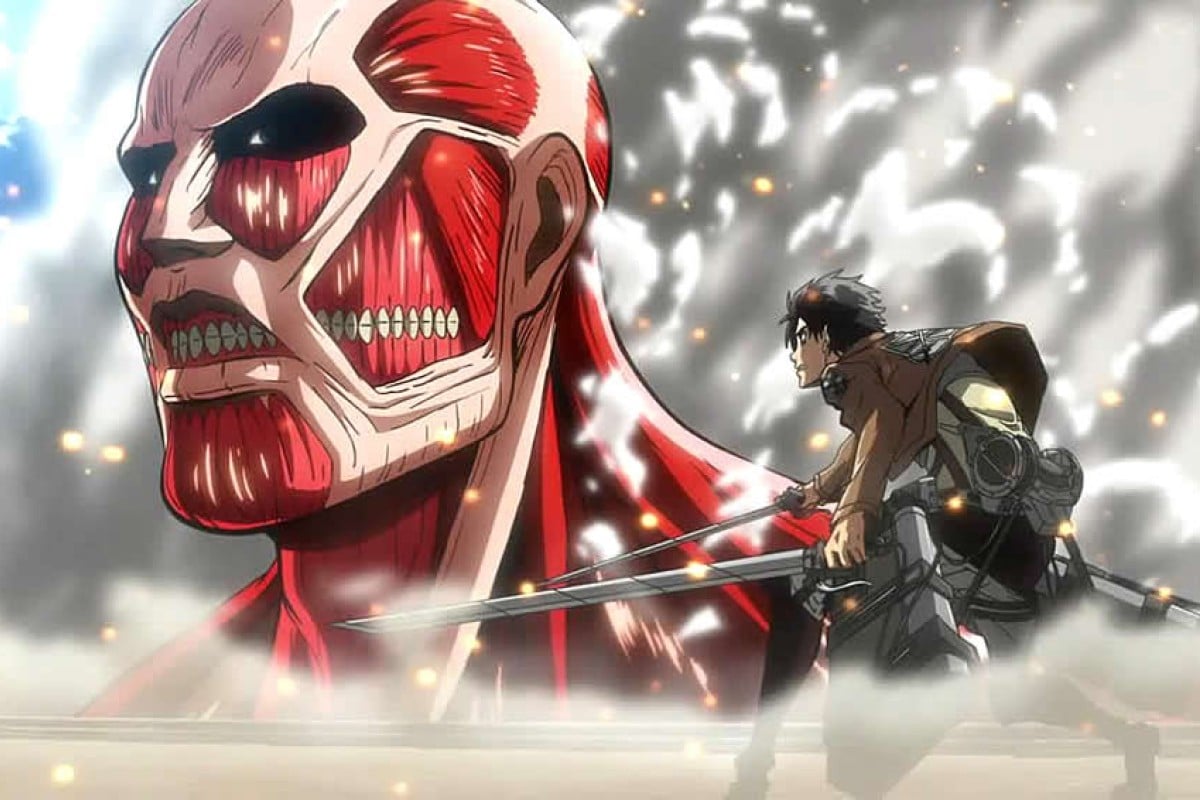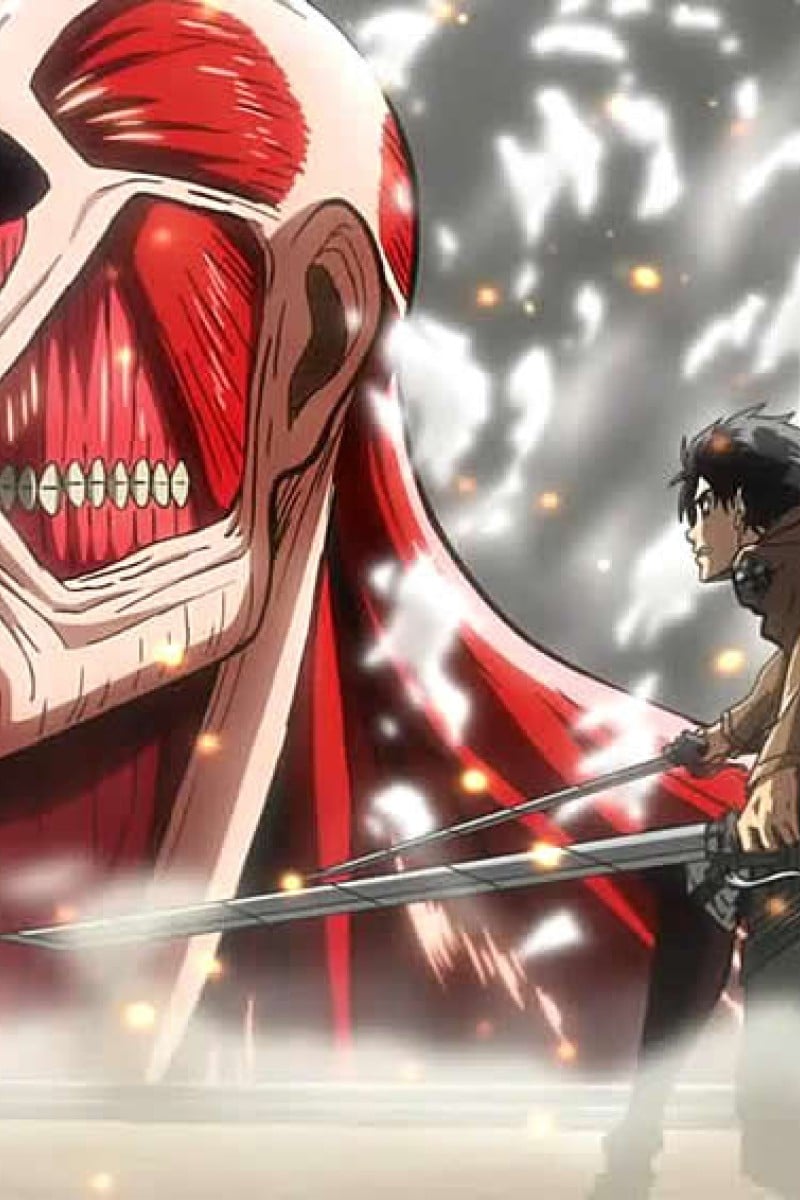
 Shingeki no Kyojin Season 2 has still got everything you loved from the first season.
Shingeki no Kyojin Season 2 has still got everything you loved from the first season.I first fell in love with Attack on Titan in summer of 2015 and boy did it take over my life. I fell completely head over heels for the anime’s characters, music, and plot, making it the centre of my existence in the months to follow. But slowly and steadily, my love for it faded. Listening to the opening theme no longer gave me goosebumps. I was pleased to hear that Season two would be released, but I can’t say I was particularly excited though.
Yet, I fell in love with Isayama’s tragic world of Titans all over again when the first episode of Attack on Titan Season 2 aired on April 1st. Over the course of 12 episodes, Director Tetsurō Araki managed to relight the excitement around the anime, raising the bar for animated thrillers even higher than before. Here’s a breakdown of just how they did it:
1 An effective soundtrack
Let’s begin with the Opening theme. Linked Horizon certainly delivered in ‘Shinzou wo Sasageyo’, depicting not only the growing intensity of action in the anime, but excitement, mystery, fear, and hope. While Season 1’s openings placed emphasis on individual themes, with ‘Guren no Yumiya’ highlighting fear and ‘Jiyuu no Tsubasa’ focusing on newfound hope, this opening effectively combines both. Refreshing, to say the very least.
Throughout the episodes, I found that many of the background soundtracks echoed those used in the first Season. At the end of the last episode of Season 2, an orchestral, heightened version of the ‘So Ist Es Immer’, arguably the most powerful track of Season 1, is used to accompany Erwin Smith’s monologue and a montage of landscapes unexplored by the anime’s protagonists. This ended the Season with a bang and made it nostalgic for fans. This is only one of the many instances this is done by the producers, and I applaud them for doing so. It made the season all the more impactful.
And finally, the ending track, ‘Yuugure no Tori’. This is the only piece in Attack on Titan which is sung entirely in English, which makes it sound more foreign to Japanese fans, highlighting the uncertain nature of the dystopian universe. What makes it truly outstanding is how it still manages to sound foreign to English-speaking fans like myself by making it difficult to interpret the lyrics. It’s able to give fans across the globe with different cultural backgrounds the same eerie experience; that’s not an easy feat to accomplish.
2 Exceptional artwork
Attack on Titan’s producers definitely spared no expense on artwork and animation. We must credit the action animator director, Arifumi Imai for his outstanding work. Imai successfully places his audience at the centre of the action, bringing out the elegant and often violent movements of humans and titans. Some fans were not pleased with the employment of CGI as it did disrupt the art style, but this experimentation with new technology reassures me that the Attack On Titan team is actively finding ways to soar to new heights. Yes, there are errors in terms of proportions and whatnot, but all in all, you will be impressed by the quality of animation in this season.
3 Developing characters which lacked dimension in the 1st Season and in the Manga
Season 1 was very much focused on the trio of protagonists, making other members of the 104th Training Corps very flat stock characters. Season 2 allows its audience to explore other characters in a way which pushes the plot forward, fill in plot holes present in the manga, and encourages the development of a connection between character and audience. The manga successfully transforms the character of Ymir from a selfish trainee into a multi-faceted human being and Season 2 does this very well. It also extends this kind of humanisation to other characters. Instead of the stone-cold, self-motivated traitors of humanity they are described to be by Isayama, the anime reveals that Bertholdt and Reiner too are victims of their past and find no pleasure in what they do. This really gives anime and manga readers alike the same kind of thrill during each episode.
4 Preserving the essence of what makes Attack On Titan stand out from others of its kind
The beauty of Attack on Titan is its ability to depict human nature in a raw, honest manner while disguising it in an action-packed plot. Season 1 captured this extremely well and its successor goes even further by touching on new, more grounded themes. While Season 1’s conflicts were mostly between humans and titans, providing a surface-level insight into human psychology, Season 2 presents clashes between humans and humans, dealing with complex moral and psychological conflicts by injecting them into scenes of combat. It places the themes of betrayal, geopolitical and socio-economic inequality, loyalty, and friendship on centre stage. This improved ability to incorporate increasingly mature themes while maintaining a high level of action makes Season 2 a truly rewarding watch.
While it did live up up to its hype, it isn’t perfect. There are several issues which made it stray away from the true spirit of the manga. Isayama’s manga has been praised for how it demonstrates true equality. We can see that its reputation is slightly tarnished through the feminisation of Mikasa Ackerman. From her anatomic build to her emotional dependency on Eren, it’s obvious that Mikasa is made in Season 2 to fit better into gender stereotypes.
While this is an issue on its own, the larger problem is that the producers seem to hint that Mikasa has a romantic interest in her adoptive brother. This is most clear in Mikasa’s ‘confession’ scene. There is a general consensus that Isayama is unlikely to present romance in his manga. However, we see an intentional attempt to make the scene romantic through how producers isolate the pair on the foreground, flush Mikasa’s cheeks, soften her glance, and silence the violent background noise. Fan service is great, it’s more important to me that an anime respects its origins.
Despite this, I feel certain that I’ll fall in love with Isayama’s world of tragedy, pain, and somehow, beauty all over again when Season 3 is released in 2018.

